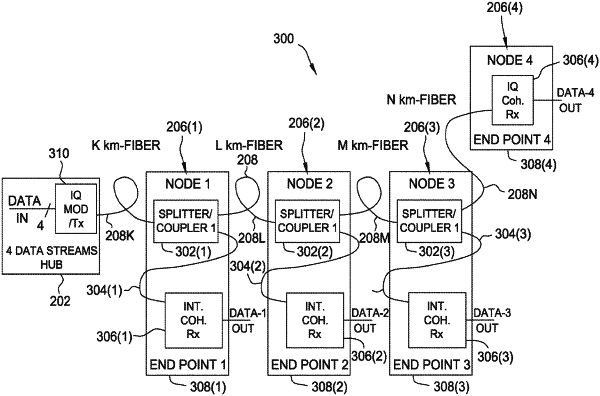| CPC H04B 10/25756 (2013.01) [H04B 10/07953 (2013.01); H04B 10/25755 (2013.01); H04B 10/532 (2013.01); H04B 10/564 (2013.01); H04B 10/612 (2013.01); H04B 10/613 (2013.01); H04J 14/028 (2013.01)] | 20 Claims |

|
1. An optical transmitter connected to an optical fiber strand of a communication network, the optical fiber strand including a plurality of nodes sequentially disposed at respective locations along the optical fiber strand at different distances, respectively, from the optical transmitter to a plurality of nodes, the transmitter comprising:
a processor; and
a memory device including computer-executable instructions, which, when executed by the processor, cause the optical transmitter to:
generate a coherent optical signal over a single wavelength;
calculate (i) a first attenuation loss from the optical transmitter to a first node of the plurality of nodes, and (ii) a second attenuation loss from the first node to a second node of the plurality of nodes; and
transmit the coherent optical signal to each respective receiver of the one or more receivers at the single wavelength,
wherein a first receiver of the one or more receivers is in operable communication with the first node and a second receiver is in operable communication at the second node, and
wherein the first and second receivers are configured to receive the same coherent optical signal from the optical fiber strand at the same single wavelength based on the first attenuation loss and the second attenuation loss, respectively.
|